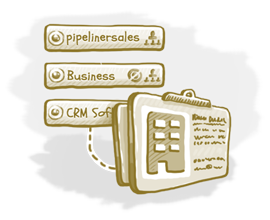Twenty years ago if you’d polled a sales force on the future of sales automation, you probably would have been met with rather frightened stone silence.
Salespeople saw their jobs completely disappearing, replaced with computerized selling and purchasing systems that required no human intervention whatsoever. And it was certainly imagined and even tried by some: a mailing goes out to a list of prospects with the hopes that the prospect will just access the company’s web site, place their order and be done with it. Others tried fully automated phone answering systems that would lead someone to purchase.
With certain items those methods might work. But with many others—especially more big-ticket items or services—it does not, and probably never will.
So now that we’re here, where has technology brought us?

For Buyers
Automation—primarily in the form of the internet—has certainly brought purchasers a much greater degree of power than they had before.
Placing numerous phone calls, leafing through catalogues, visiting show rooms and weathering lengthy in-person pitches by salespeople has now been replaced by sitting at a desk and surfing product web sites, forums and social media. A purchaser not only discovers what type of product he or she needs, but the best makes or brands, where to get it at the best price and what others are saying about it. The same is true for a company making a purchase.
While all this is possible, it does not mean a buyer never needs to speak with a sales rep. This is especially true when a company is purchasing a service or item for which they’ll need support, or is seeking a better price or volume discount. For that they’re going to have to meet a salesperson or speak to one on the phone.
Thanks to the state of sales force technology, that sales rep is far better equipped as well to help that prospect.
For the Sales Force
It used to be that a sales rep knew very little about a prospect, except that he or she (or in the case of a company, it) was potentially interested in an item. The salesperson would then work his or her way through some semblance of a sales process, usually of their own composition, and hope it all worked.
Today, there is a plethora of data about prospects. In B2B situations, vendors have the capability of possessing a very clear rundown of a prospect company—the problems they run into, the issues they’re trying to solve with your product or service, and the major reasons they would come to your company.
A sales force has an established, proven sales process that the sales reps all follow. It works in the majority of cases, so the sales rep can simply walk through it.
Last but not least, companies are utilizing streamlined CRM solutions that make it possible to carefully track prospects all the way through the sales process. If another salesperson must pick up the sale, the customer profile is right there along with the sales actions already taken, level of interest, specific needs and so on. Much greater control can now be had by salespeople—to their benefit, and the benefit of their prospects, too.
Sales Force Technology – Expertise Required
The advent of automation does mean that a salesperson must be more of a sales expert than previously. Since much of lower-level purchasing is automated, when a sales rep gets involved there is usually more creativity involved. The salesperson must rapidly gain the prospect’s trust in the company, the product and the sales rep themselves.
Fortunately all of the tools a salesperson now has at his or her disposal greatly help that salesperson to become that expert. In addition to the automated sales process and an empowering CRM solution, it is possible to place sales coaching and educational materials right in CRM, at the sales pipeline steps to which they apply. A salesperson can stay abreast of the very latest techniques being utilized by all members of a sales force.
The dire predictions made for the sales force have thankfully not come to pass. Instead the sales force utilizes automation to sell better and more than than ever.
Click here to see what the ideal CRM solution looks like.





















